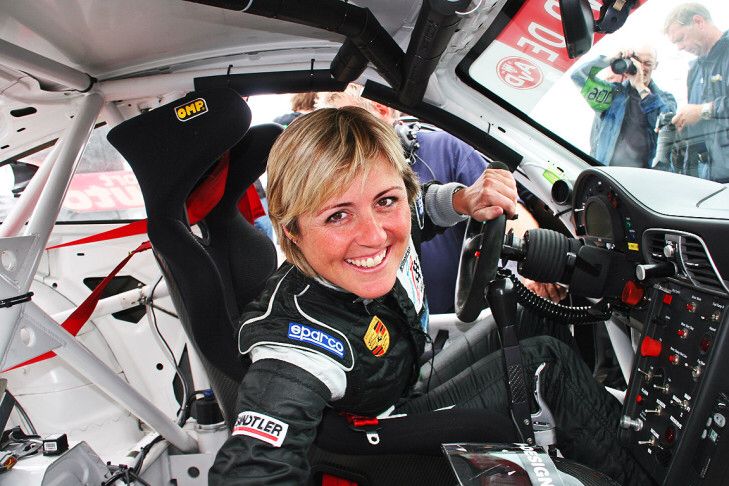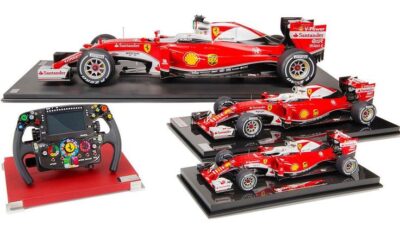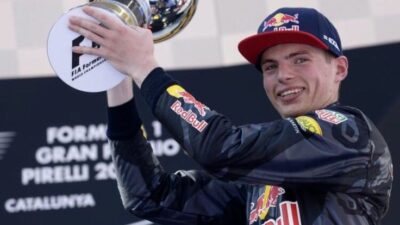For decades, motorsport has been viewed as a male-dominated arena where women struggled to find their place. Only 1.5% of licensed racing drivers globally are women, according to recent statistics from the motorsport industry, highlighting the significant gender gap that exists in competitive racing today.

However, the landscape is rapidly changing as women increasingly break through barriers and make their mark across various motorsport disciplines. From Formula 1 to rally racing, motorcycle championships to endurance events, female competitors are proving that skill, strategy, and determination matter more than gender.
The journey has not been easy, as women have faced cultural bias and limited access to resources like sponsorship, training programs, and competitive opportunities. Despite these challenges, pioneering women continue to shatter stereotypes and pave the way for future generations of female racers, engineers, and team leaders in motorsport.
Key Takeaways
- Women represent only 1.5% of licensed racing drivers worldwide but are increasingly breaking barriers across all motorsport disciplines
- Female competitors face significant challenges including limited sponsorship opportunities, cultural bias, and restricted access to training programs
- Pioneering women in motorsport are creating pathways for future generations through their achievements both on track and in technical leadership roles
Pioneers of Women in Motorsport

The first women to enter professional motorsport faced huge challenges in the 1950s and 1960s. Maria Teresa de Filippis broke into Formula 1 in 1958, while Lella Lombardi became the only woman to score championship points in Grand Prix racing.
Maria Teresa de Filippis’ Historic F1 Entry
Maria Teresa de Filippis made history as the first woman to compete in a Formula 1 Grand Prix in 1958. The Italian driver entered three races that season.
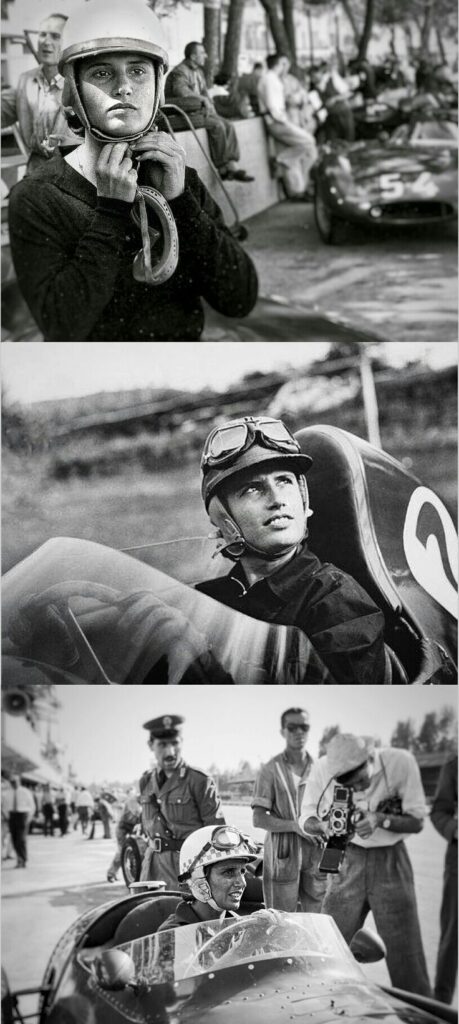
She faced strong resistance from male competitors and officials. Some race organizers tried to block her entry into events.
Key Achievements:
- First woman in Formula 1 history
- Competed in Belgian, Portuguese, and Italian Grand Prix
- Finished 10th at her home race in Monza
De Filippis qualified for only three of the five races she attempted to enter. Her best result was 10th place at the 1958 Italian Grand Prix.
Her career ended after the 1958 season due to limited opportunities. Male drivers and team owners often refused to work with female racers during this time period.
Lella Lombardi’s Points in Grand Prix
Lella Lombardi remains the only woman to score points in Formula 1 championship history. The Italian driver competed in 17 Grand Prix races between 1974 and 1976.
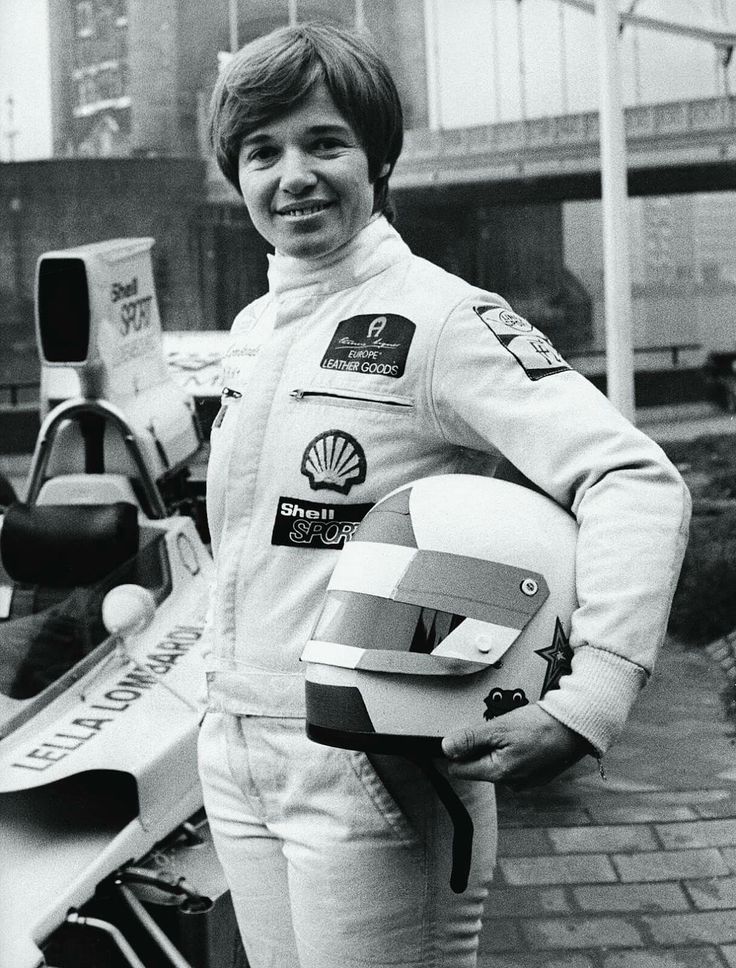
She earned her historic points at the 1975 Spanish Grand Prix. Lombardi finished sixth in the rain-shortened race at Barcelona.
Racing Record:
- 17 F1 race starts
- 0.5 championship points (half points awarded due to shortened race)
- Best finish: 6th place
Lombardi also raced in sports cars and touring cars throughout her career. She won several non-championship races before moving to Formula 1.
Her point-scoring achievement stood alone for decades. No other woman has matched this feat in Formula 1 since 1975.
Early Trailblazers in Racing
Women began racing cars almost as soon as motorsport started. Early female racers competed in hill climbs and endurance events in the early 1900s.
Camille du Gast raced in the Paris-Madrid race in 1903. She became one of the first women to compete in major European racing events.

American driver Janet Guthrie broke barriers in NASCAR and IndyCar racing. She was the first woman to compete in the Indianapolis 500 in 1977.

Notable Early Pioneers:
- Hellé Nice: French racing driver in the 1920s and 1930s
- Kay Petre: British driver who set speed records in the 1930s
- Denise McCluggage: American racing journalist and competitor
These women broke barriers in motorsports during times when female participation was heavily discouraged. They faced discrimination from competitors, officials, and fans.
Many early female racers had to use male pseudonyms to enter competitions. Others were banned from certain racing series entirely.
Modern Icons and Record-Breaking Achievements

Today’s female racing champions have shattered records and opened doors across multiple racing series. These drivers have proven their skills on international stages while inspiring the next generation of female racers to pursue professional careers.
Jamie Chadwick’s Rise and Success
Jamie Chadwick became the most dominant driver in women’s motorsport history. She won three consecutive W Series championships from 2019 to 2022.
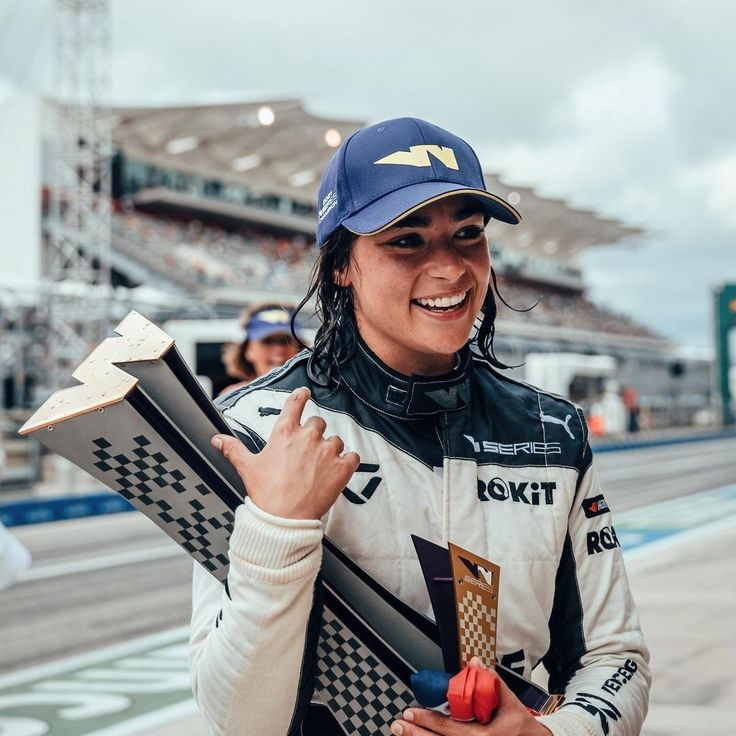
Her breakthrough came in 2018 when she became the first woman to win the British GT Championship. This victory established her as a serious competitor in professional racing.
Chadwick’s success continued in America where she joined Andretti Global in Indy NXT. She became the first full-time female driver in the series for 13 years.
In 2024, she achieved another milestone by winning her first race in America. This made her the first female winner in the series for over a decade.
Key Achievements:
- Three W Series championships
- First woman to win British GT Championship
- First female Indy NXT winner in 10+ years
- Williams Driver Academy member
The Impact of Susie Wolff
Susie Wolff transformed from competitor to industry leader. She became the first woman in over 20 years to drive an F1 car during practice sessions in 2015.
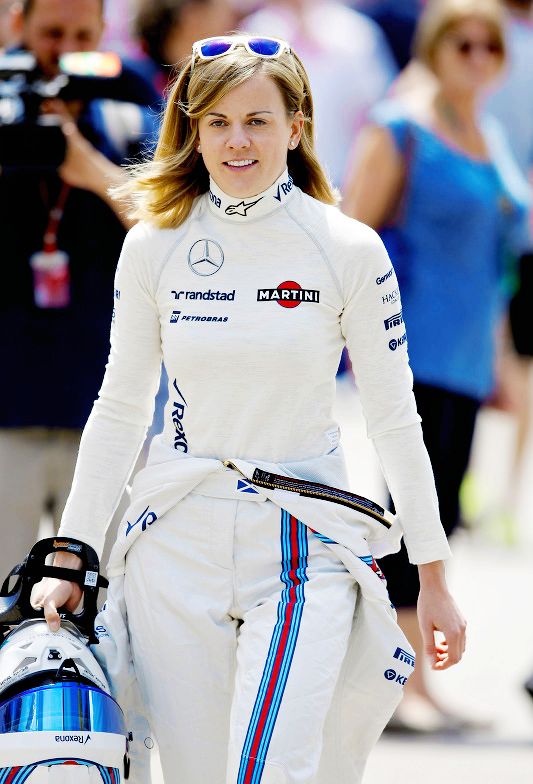
Her racing career included seven years in DTM. She scored points multiple times in Germany’s most competitive touring car series.
After retiring from racing, Wolff focused on developing opportunities for women in motorsport. She created the “Dare to be Different” program, later renamed Girls on Track.
Wolff’s leadership role expanded when she became managing director of F1 Academy. This series provides a crucial pathway for female drivers to advance their careers.
She also served as CEO of Formula E’s Venturi Racing team. Under her leadership, the team achieved second place in the championship standings.
Tatiana Calderón’s Global Career
Tatiana Calderón broke barriers across multiple racing categories worldwide. She became the first Colombian woman to compete in Formula 2.
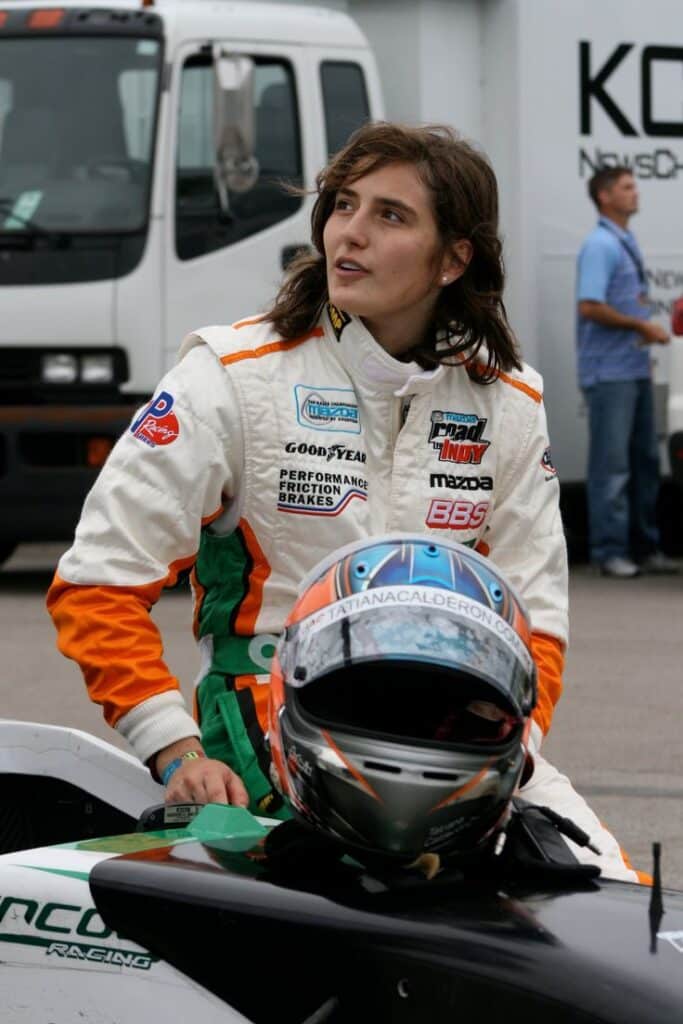
Her international career included races in Japan’s Super Formula series. She competed against top-level drivers from around the world.
Calderón also raced in the World Endurance Championship. She drove for prestigious teams including Richard Mille Racing and Signatech Alpine.
In Formula 1, she served as a test driver for Alfa Romeo Racing. This role made her one of the few women to drive modern F1 machinery.
Her diverse racing portfolio demonstrates the global opportunities available to skilled female drivers. She has competed on four different continents throughout her career.
Diverse Disciplines: Women Across Motorsport Categories

Women compete across multiple racing series today, from Formula racing development programs to IndyCar’s premier oval circuits and the demanding terrain of rally championships. Each discipline offers unique challenges and pathways for female drivers to showcase their skills.
Formula Racing: F1 Academy and W Series
F1 Academy serves as the primary development series for women seeking Formula 1 opportunities. The championship provides equal machinery and significant financial support to reduce barriers that traditionally limited female participation.
Abbi Pulling dominates the 2024 F1 Academy season with seven victories and leads the championship with 95 points. Her success demonstrates the series’ effectiveness in developing talent.
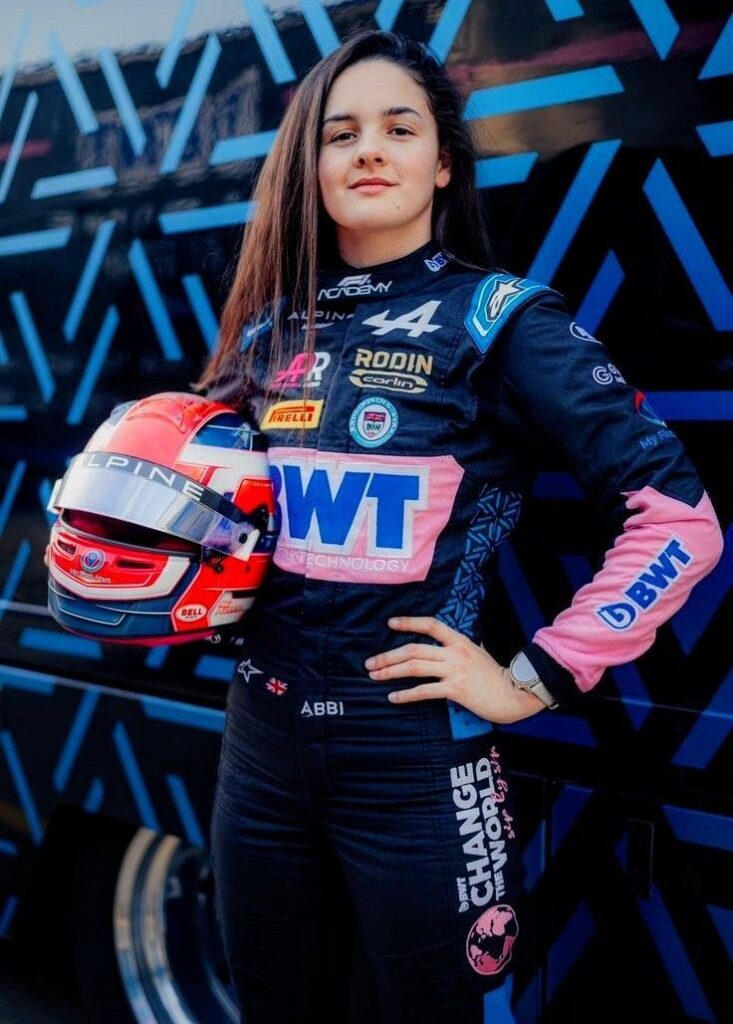
The W Series, which operated from 2019 to 2022, helped establish careers for drivers like Jamie Chadwick. Chadwick won three consecutive championships before moving to American racing.
Jamie Chadwick claimed the inaugural W Series title in 2019 and continued her dominance for two additional seasons. Her success opened doors to the Williams Driver Academy and eventual move to IndyCar development.
IndyCar and American Circuits
IndyCar represents the pinnacle of American open-wheel racing. Jamie Chadwick joined Andretti Global as the first full-time woman in Indy NXT in 13 years.
Her progression shows the pathway from development to premier racing:
- 2023: 13th overall, five top-10 finishes in 14 races
- 2024: First podium at Indianapolis Road Course, maiden victory at Road America
- Testing: 87 laps in IndyCar at Barber Motorsports Park
Tatiana Calderón from Colombia has competed in various American series. She raced in Super Formula and serves as a test driver, demonstrating international talent in American motorsport.
The financial structure of American racing provides more opportunities compared to European series. Teams often have larger budgets and more testing opportunities.
World Rally Championship and Off-Road Racing
World Rally Championship (WRC) presents unique challenges with public roads and varied terrain. Female co-drivers have achieved significant success, though female drivers remain limited at the highest level.
Rally racing requires different skills than circuit racing:
- Navigation: Co-driver communication and pace notes
- Adaptability: Changing road surfaces and weather conditions
- Endurance: Multi-day events across hundreds of miles
Regional rally championships provide stepping stones to WRC competition. Many countries have national series that welcome female competitors.
Off-road disciplines like desert racing and rallycross offer additional opportunities. These categories often have less traditional barriers and welcome diverse participation.
Cross-country rallies like the Dakar Rally have featured female competitors as both drivers and co-drivers. The format emphasizes navigation and endurance over pure speed.
Breaking Barriers and Overcoming Challenges

Women face deep-rooted stereotypes and gender bias in motorsports, but new programs are creating pathways for female participation. Recent data shows growing involvement of women as drivers, engineers, and team members across racing series.
Navigating Stereotypes and Gender Bias
Motorsports has traditionally been viewed as a male-dominated field. Many young girls believe they cannot become Formula 1 drivers simply because they have never seen female representation at the top levels.
Women competing in motor racing face questions about their physical strength and speed compared to male competitors. These assumptions create mental barriers before women even enter the sport.
Common stereotypes include:
- Lack of physical capability to handle race cars
- Insufficient spatial awareness for high-speed competition
- Limited determination to drive aggressively
Female drivers often struggle to secure the same financial backing and professional support as their male counterparts. Sponsors historically invested less in women’s motorsport careers.
The media plays a role in shaping perceptions. Coverage of female drivers sometimes focuses more on gender than racing achievements. This treatment reinforces the idea that women in motorsports are unusual rather than skilled athletes.
Initiatives Promoting Inclusion
Several programs now work to break down barriers for women in motorsport. The W Series provides 18 full-time racing seats exclusively for female drivers.
Extreme E uses a unique 50-50 gender split format. Each team must field both male and female drivers in competition.
Key inclusion programs:
- F1 Academy: New feeder series launching to help women join single-seater racing
- Girls on Track: STEM education program connecting young girls with motorsport careers
- Dare to be Different: Campaign founded by Susie Wolff to encourage female participation
Mentorships and networking opportunities connect women with established professionals in the industry. These relationships provide guidance and open doors to new opportunities.
Educational programs introduce girls to engineering and technical roles within racing teams. Many positions in motorsports extend beyond driving to include mechanics, engineers, and team management.
Statistics on Female Participation
Female participation in motorsports remains low but shows signs of growth. Research reveals that fewer than 5% of the total racing driver pool consists of women.
Current participation trends:
- Increased women working as mechanics and engineers in paddocks
- More female journalists and content creators covering racing
- Growing number of women in team leadership positions
The Hamilton Commission found that interest in motorsport careers among young women declines with age. This suggests that early intervention and role models are critical for sustained engagement.
More women now compete across different racing disciplines including rallycross, World Rally Championship, and various national series. The visibility of these competitors helps inspire the next generation of female racers.
Leadership and Representation Beyond the Track

Women are taking on key roles in team management and engineering positions across motorsport. Organizations and advocates are working to create more opportunities and remove barriers that have limited female participation in leadership roles.
Women in Team Management and Engineering
Female engineers and managers are becoming more visible in motorsport teams. They work as race engineers, data analysts, and team coordinators across different racing series.
Women are increasingly stepping into technical and leadership roles in the sport. These positions include everything from car design to race strategy.
Many teams now actively recruit women for engineering positions. Formula 1 teams employ female engineers who work directly with drivers during race weekends.
Key roles women fill include:
- Race engineers who communicate with drivers
- Data analysts who study car performance
- Aerodynamics specialists who design car parts
- Team managers who oversee operations
From drivers to engineers, mechanics to team managers, women are stepping into key roles across the industry. This growth helps create role models for future generations.
Organizational Efforts and Advocacy
Susie Wolff leads major efforts to increase female participation in motorsport. She founded Dare to be Different to encourage women and girls to get involved in racing.
The program she created focuses on removing barriers that keep women out of motorsport careers. F1 Academy and greater female representation are inspiring a new generation of women to join racing.
Major advocacy programs include:
- F1 Academy – All-female racing series
- Dare to be Different – Career development initiative
- Women in Motorsport commission – Industry guidance group
These organizations provide mentoring and networking opportunities. They connect women with job openings and training programs in the motorsport industry.
Many racing series now have specific programs to recruit female talent. These efforts target both on-track competitors and behind-the-scenes professionals.
Rising Stars and the Next Generation

Young female drivers are making impressive progress through racing series worldwide. Programs like F1 Academy and youth development initiatives are creating more opportunities for women to advance their motorsport careers.
Emerging Drivers to Watch
Several talented drivers are leading the charge for the next generation of women in motorsport. Ella Lloyd represents the promising future for motorsports as a 19-year-old Welsh driver who took an unusual path into racing.
Lloyd started in horse racing before switching to cars in 2022. She competed in the Ginetta Junior Championship and scored points in 15 out of 25 races during her first year.
Her second season brought even greater success in the GT Championship. Lloyd claimed 10 victories and eight additional podiums. She finished as vice-champion in only her second year of car racing.
Abbi Pulling has emerged as another standout talent. She began karting at age eight and quickly established herself as a top competitor. Pulling secured a Double British Junior TKM Championship and became the most successful woman in karting.
Pulling dominated the 2024 F1 Academy season with 95 points and seven victories. She also made history by becoming the first female to win in Formula 4.
Jamie Chadwick continues to break records in American racing. She became the first woman to win the British GT Championship. Chadwick later dominated the W Series for three consecutive seasons.
She moved to IndyCar’s feeder series in America. Chadwick secured her first race win at Road America, becoming the first female winner in over 10 years.
Youth Development and Support Programs
F1 Academy serves as the primary development pathway for female racers. The series provides financial support and media exposure that helps drivers advance their careers. Many top female talents now compete in this championship.
The program connects directly to Formula 1 teams and creates pathways to higher racing series. F1 Academy aims to make motorsports more financially viable for female drivers.
Key Development Programs:
- Girls on Track (formerly Dare to be Different)
- McLaren Driver Development Programme
- Williams Driver Academy
- Various karting scholarship programs
The W Series previously filled this role before transitioning into F1 Academy. This change created a more stable platform with stronger connections to Formula 1.
Programs designed to attract girls into STEM fields are also supporting the next generation. These initiatives focus on engineering and technical roles within motorsport.
Female participation has grown to 10% across all racing levels. Karting shows even higher participation at 13%, while Formula and GT racing remain at 7%.
Frequently Asked Questions

Women face distinct barriers in motorsport ranging from financial obstacles to cultural stereotypes. Support systems and pioneering female drivers continue to reshape the industry’s landscape and inspire future generations.
What challenges do women typically face when entering the field of motorsport?
Women encounter multiple barriers when entering motorsport. Financial backing and sponsorship opportunities remain limited compared to male counterparts.
Physical stereotypes persist despite motorsport being skill-based rather than strength-dependent. Many assume women lack the spatial awareness or determination needed for high-speed racing.
Access to resources like cars, training, and professional connections proves challenging. The motorsport structure was historically designed for men.
Cultural barriers create additional hurdles. Some teams and sponsors still view women as risky investments in competitive racing environments.
How have female drivers influenced the perception of women in competitive racing?
Female drivers have proven that skill transcends gender in motorsport competition. Their performances on track demonstrate equal capability in high-pressure racing situations.
Examples like Lyn St. James in IndyCar and Michele Mouton in rallying showed women could achieve success despite opposition. Their victories challenged long-held assumptions about female racing ability.
Modern female drivers continue breaking stereotypes through consistent competitive performances. They’ve shifted conversations from gender to talent and results.
Media coverage of successful female drivers has gradually changed public perception. Young fans now see women as legitimate competitors rather than novelties.
What initiatives are in place to support and encourage women to pursue careers in motorsport?
W Series provides 18 full-time seats with an all-female grid. This dedicated championship offers direct racing opportunities for women.
Extreme E features a unique 50-50 gender split format. Each team must field both male and female drivers equally.
F1 Academy launched as a feeder series aimed at helping women join the single-seater pyramid. This creates a clearer pathway to higher racing levels.
Dare To Be Different campaigns work to inspire young girls. These programs provide exposure to motorsport opportunities beyond just driving.
Who are some of the pioneering women in racing history and what impact have they had on the sport?
Maria Teresa de Filippis broke barriers in the mid-20th century. She became the first woman to compete in Formula One.
Lyn St. James made history in IndyCar racing. Her success opened doors for future female open-wheel competitors.
Michele Mouton dominated rallying competitions. She proved women could excel in one of motorsport’s most demanding disciplines.
Susie Wolff created the Dare To Be Different initiative. Her advocacy work continues inspiring new generations of female motorsport participants.
What role do sponsorships and endorsements play in promoting women in motorsport?
Sponsorship remains crucial for female drivers’ career advancement. Limited financial backing often prevents talented women from progressing to higher racing series.
Corporate sponsors increasingly recognize the marketing value of supporting female drivers. Women bring unique audience engagement and brand differentiation opportunities.
Challenging outdated stereotypes and celebrating achievements helps attract sponsor investment. Success stories demonstrate return on investment potential.
Media coverage of sponsored female drivers creates positive brand association. Companies benefit from supporting diversity and inclusion initiatives.
How does the representation of women in motorsport affect younger generations and their interest in racing careers?
Young girls often don’t see motorsport as an option without female role models. Many assume racing regulations prevent women from competing.
Visible female representation changes these perceptions dramatically. When girls see women racing, they understand it’s achievable for them too.
Female drivers, mechanics, and engineers in paddocks show diverse career opportunities. This expands interest beyond just driving positions.
Seeing successful women in strategic motorsport positions inspires career ambitions. Young girls can envision themselves in leadership roles within the industry.
